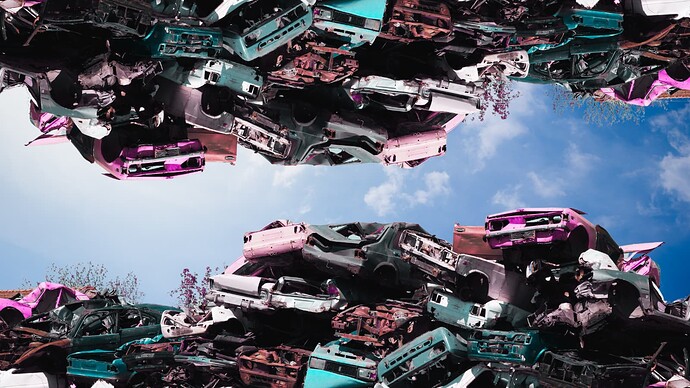
Illustration by Inge Snip
One of the problems of the car industry is overproduction. This is also why cars are thrown away after 15 years because cars are pushed into the system at the front, making them prematurely obsolete, and therefore people get rid of them.
Where do those economies of scale come from? It depends on the technology that the car industry uses that forces the economies of scale: the all-steel body. Cars consist of basically a welded steel box. That is where the high investment is.
The problem is that it’s such a capital-intensive technology it forces economies of scale. As a result, a modern car plant’s break-even point for a mass-produced model is between 180,000 and 200,000 a year. They lose money when they fall below that unless they are a specialist producer. Their only option is to produce at that level and then sell.
If you get rid of that technology, can you then go for lower economies of scale and not be forced to produce in those high volumes?
Alternative business model
Based on low-volume manufacturers, a fracturing localised to its market, and combine it with a sales and maintenance model: a micro factory retail. In this small industrial units assemble cars, and customers buy straight from those assembly facilities. They can specify the vehicle to their needs, and local suppliers can feed into it.
If demand for new cars declines, the company can deal with maintenance, repair, upgrading, and recycling.
Examples:
-
The company Simple, based in Wales. Although being a small business, they’re swamped. They’ve developed a small hydrogen fuel cell car, building a fleet of 50 cars that will be placed with people in the local area. Their business model is based on a kind of leasing, a product service system. You lease the car, and then the company takes them back and reconfigures them for the next customer. They do all the repair and maintenance that’s needed. One of their arguments was that when you look at the fuel cell cars that the industry has, they are mainly large American cars. But what if you can get small off-the-shelf fuel cells for next to nothing. The entire car is much cheaper by configuring a very lightweight small car around that.
-
Gordon Murray designed the first carbon fibre monocoque Formula One car and a road car, the McLaren F1, which is supposed to be the best supercar ever made. Murray decided around 2000 he wanted to venture into environmental car design. His model is that he develops concepts, including the manufacturing concept. The product can then be placed around the world. You would have a network of factories.
Not everybody needs to do the design. The basic design is something that’s modularised, and the factory is modularised, but then you can configure it locally for local tastes and allow local suppliers to come in.